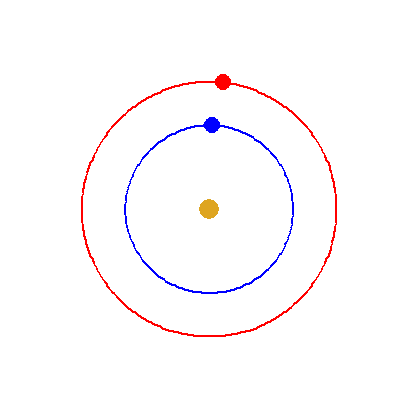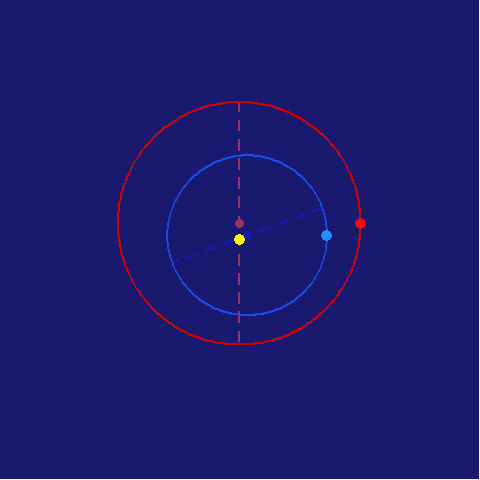How long is a Mars year?
We know how long a year is for our Earth, right? We measure it by the return of the seasons, or the knowledge that the earth has returned to the same position in its orbit around the sun. (These two times aren't actually exactly the same: a difference known as the precession of the equinoxes, with which we won't concern ourselves now.)
Kepler uses the length of a Mars year when calculating mean longitudes in Part II, and for keeping Mars in the same spot in Part III. But how do we know how long a year is for Mars?
We could look for when Mars is again in the same constellation, after passing through all the signs of the zodiac. But, the amount of time for Mars to return to the same sign can vary wildly. In this animation, the Earth sees Mars against the same sign when they are vertically aligned, since the fixed stars are as if infinitely far away.

So, this method does not work. We do have something that recurs almost evenly for Mars, however: oppositions. Although they are not evenly spaced in time (as we measure time in days here on earth by our rotation), they are all reasonably close in their time. Taking a number of observations, we find an average time between oppositions to be 780 days:

So if Mars and Earth are side-by-side every 780 days, let's figure out how long it takes for Mars to go around exactly once. We know that in 780 days, the Earth has revolved around the sun twice in 730 days, with 50 days left over. In those 50 days, the earth goes around the sun 50/365 of an orbit. Since Mars and Earth are neck-and-neck in 780 days, Mars must have been lapped in its race with the Earth. They are at the same place on the track (50/365 along it), so Mars must have "run" 1 (50/365) laps in 780 days.
Now, with a simple division:
| | |
| | = 686, |
| 1 + (50/365) |